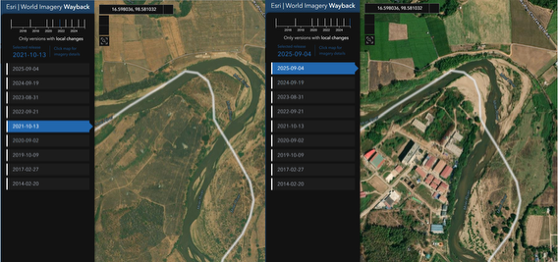The Brazilian criminal landscape’s undergone a dramatic shift in recent years. Once rampant traditional street crime – robbery, assault, mugging, pickpocketing, car theft, etc. – has declined, and in 2024, the country’s homicide rate reached its lowest level in more than a decade (although Brazil still saw for more total murders than any other country in the world).
These improvements do not, however, appear to indicate a decline in overall Brazilian crime, but instead a pivot on the part of Brazilian criminals. While street crime’s fallen, fraud and scams have grown at an alarming rate.
The Brazilian Federation of Banks (FEBRABAN) reported a 17% increase in scam losses in Brazil from 2023 to 2024, with losses surpassing R$10 billion (or $1.7 billion USD). According to the Brazilian Public Security Forum, every hour, more than 4,600 Brazilians receive some form of a scam message.
The period of change
Statistics from the Brazilian Public Security Yearbook show fraud reports quadrupled between 2018 and 2023, from 426,799 to 1,965,353 cases, equating to one scam every 16 seconds. Robberies, meanwhile, declined from 1,506,151 to 870,320 cases.

Fraud now represents Brazil’s most common property crime. The turning point appears to be the 2020 pandemic. As physical mobility decreased, criminals pivoted from in-person crimes to digital fraud. By 2021, scams had officially overtaken robberies. Reduced street activity and increased online interactions facilitated this transition, and criminals – apparently – haven’t looked back.
Crime’s digital revolution
Brazil's rapid digital transformation, with internet access for all and the mass adoption of smartphones, shifted much of the average Brazilian’s daily life online. From banking to shopping to social media, new digital habits for consumers created new targets for scammers. Digital literacy lags behind digital adoption, leaving users vulnerable. Around 70% of financial scams in the country involve social engineering.
We’re increasingly seeing organized crime behind fraud operations, using the proceeds from these scams to finance gangs and militias. Fraud has become a key revenue source, often replacing more dangerous activities like drug or arms trafficking. These criminal groups are leveraging leaked data and purchasing personal information to call users armed with privileged details, increasing their chances of success. They've even established industrialized criminal call centers, making millions of calls every day.
Fraudsters now employ fake apps, launch phishing attacks, conduct romance scams, and even hack devices to steal data. More recently, they’ve begun using generative AI to create highly convincing scams at scale — from deepfake voices to automated social engineering campaigns.
Some crimes mix physical and digital tactics, stealing cellphones to access banking apps, or Pix scams following express kidnappings. These methods offer high returns with lower physical risk.
Brazil's legal system has also been slow to adapt. The first law dedicated to addressing online fraud was only introduced in 2021, and its enforcement remains weak, with low clearance rates. The 2024 bill PL 4.161/2020 aims to increase sentences for digital fraud by up to two-thirds. Authorities also call for restructuring police units and investing in digital forensics.
An expensive problem
Banks and fintechs have responded to this surge in fraud by investing billions in prevention technologies (an estimated R$4.5 billion in 2023, up from R$3.2 billion in 2022).
According to data from the Central Bank, Pix transactions grew from 1.04 billion in September 2021 to over 4 billion by September 2023. Despite this rapid adoption, around 9% of users have reported experiencing Pix-related fraud. In response, banks can now delay suspicious payments — a process approved by the Central Bank, which advises waiting between 30 minutes to an hour for risk analysis. Another layer of protection is the cautious hold, which allows the receiving bank to block funds for up to 72 hours when fraud is suspected.
Fraud teams work 24/7, monitoring and flagging suspicious accounts. According to a 2024 survey by Datafolha, Brazil sees more than 4,500 attempted financial scams every hour, totaling more than 39 million attempts per year. The most common tactic involves criminals posing as bank employees through phone calls and messages. The actual numbers, however, are believed to be even higher due to widespread underreporting. This imposes high operational costs and reputational risks, especially with growing regulatory pressure to compensate defrauded customers.
Yet, criminals are adapting too. Brazilian fraud rings have recently expanded their realm of operations, targeting European banks.
The need for behavior
While consumer education campaigns, law enforcement efforts, and regulation all must evolve and improve to combat this surge in fraud, we must also equip our financial institutions with the tools they need to recognize and stop fraud in real time, before any money leaves a user’s account.
Behavioral biometrics has proven a critical layer in protecting both individual users and the broader financial system. Countries with stronger regulatory frameworks have been able to drive greater technological adoption, accelerating the deployment of advanced fraud prevention tools.
Behavioral technologies can detect subtle anomalies during scam attempts, such as unusually long sessions, active phone calls during transactions, signs of stress, or erratic navigation patterns, identifying better than any other technology yet invented when a user is being manipulated in real time.
Moreover, behavioral analysis is not limited to protecting victims. It also plays a key role in identifying mule accounts before criminals use them to launder illicit funds. By recognizing inconsistencies in usage patterns and behavioral profiles, financial institutions can act preemptively.
At the same time, the financial sector must collaborate on secure data sharing practices, leveraging anonymized user data to balance privacy with protection, while enabling innovation in fraud-prevention without adding unnecessary friction for users, reinforcing trust across the financial ecosystem.
What lies ahead
Fraud is no longer just a banking issue. It’s now a matter of public safety. What was once limited to financial institutions now impacts society at large, as scams increasingly target ordinary citizens, retirees, and vulnerable individuals who, in many cases, lose their life savings. Organized crime has evolved, investing in criminal call centers and leveraging technology to refine social engineering tactics. As a result, while traditional violent crime declines, financial fraud surges — driven by higher financial returns and lighter legal penalties. The rapid digitalization of financial services has also made it easier to create and operate mule accounts, which serve as the gateway to most of these crimes. Yet, there is still no clear legal framework to address this growing threat.
The shift from physical to digital crime in Brazil requires a new paradigm of prevention and enforcement. As fraudsters become more sophisticated, Brazil must close the gap. We must arm our financial institutions with the technology they need to safeguard consumer assets and build digital trust across society.
With coordinated action, Brazil can turn the tide and ensure the digital world becomes as safe as the physical one — or even safer.



